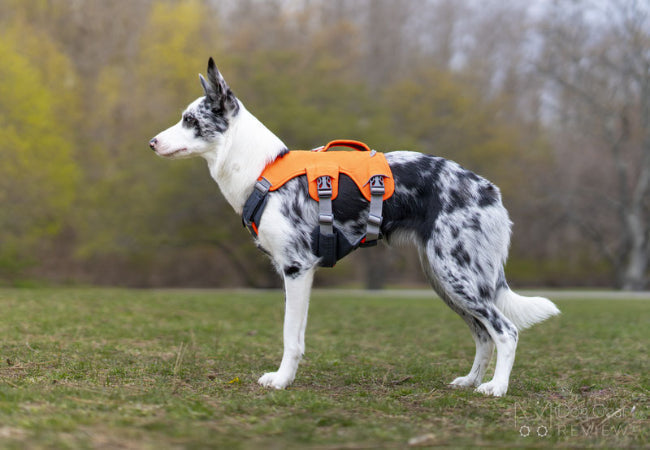Vet-Approved 2025: Stop Your Dog Escaping Their Harness 🐕🔒

In this article
Vet-Approved 2025: Stop Your Dog Escaping Their Harness 🐕🔒
By Dr. Duncan Houston BVSc
Does your dog magically slip out of their harness mid-walk? It’s a common and dangerous problem—especially for anxious, reactive, or newly adopted dogs.
As a veterinarian and founder of Woopf, I’ve seen dozens of escape cases turn into emergencies. The good news? With proper fit, gear, and training, it’s completely preventable.
🚨 Why Dogs Escape Their Harnesses
- ❌ Harness is too loose or improperly adjusted
- 🐕 Dog backs up quickly and slips through the neck or belly opening
- 🔄 Wrong harness type for body shape (deep-chested or lean dogs)
- 😰 Harness is associated with fear, causing panic and flight attempts
🔍 1. Check the Fit (2-Finger Rule Isn’t Enough)
For escape-prone dogs, use the 2-finger rule plus:
- ✅ Chest strap sits just behind the elbows—not under the armpits
- ✅ Neck opening cannot be pulled over the head when dog backs up
- ✅ Harness does not shift to the side when walking
Read the full guide on fit here → How Tight Should a Dog Harness Be?
🏆 2. Choose the Right Escape-Proof Harness
Woopf Explorer Harness
Designed with an adjustable Y-front and dual D-ring system, this harness prevents twisting, shifting, and slipping—even during sudden backward movement.
Woopf Sherpa Harness
Perfect for smaller breeds and puppies. Offers soft, form-fitting comfort while reducing gaps around the chest and shoulders.
🧠 3. Add a Safety Back-Up Clip
Attach a carabiner from the harness D-ring to your dog’s collar. If they slip the harness, they’re still secured by the collar (especially important for rescues).
🩺 4. Rule Out Anxiety or Pain
If your dog bolts when you reach for the harness, the issue may be fear, trauma, or discomfort.
🎓 5. Train Calm Harness Tolerance
Step-by-Step:
- Place the harness on floor with high-value treats
- Reward sniffing, touching, and stepping near it
- Gently clip on for 5–10 seconds, then remove and reward
- Gradually increase wear time before walks
🚫 Avoid These Common Mistakes
- Buying “room to grow” harnesses for puppies—dangerous and easy to slip
- Using cheap, stiff harnesses that don’t adjust properly
- Attaching leash to back only on anxious or reactive dogs (front clip gives more control)
💡 Extra Safety Tips for Escape Artists
- Use a bungee lead to reduce sudden jolts or lunging pressure
- Clip your treat + bag pouch to the harness for faster reward delivery
- Reward every 5–10 steps on walks to reinforce calmness and focus
🎁 Shop Escape-Resistant Gear from Woopf
- Explorer Harness – Dual-clip, secure Y-front structure
- Sealskin Waterproof Harness – Easy-clean, low-slip fit
- Shock-Absorbing Lead – Reduces strain during reactivity
Final Thoughts
If your dog keeps escaping their harness, don’t panic. Fit, gear, and training can fix the issue in most cases. Use a vet-approved, escape-resistant harness and reinforce calm walking behavior from the start.



